Concepting as a step in the design process that over and over. The first concepting step is your original idea. If you are an inventor, you likely have created the idea a few times in your head. Maybe you’ve played with some rough (or detailed) prototypes. Even if you aren’t an “inventor”, maybe you work at a large company, you are still inventing and concepting. You’ve created a concept. Maybe it’s only one version and just barely an idea, but it’s there.
Concepting, and we like to call it ideation a lot of the time, happens throughout the process. When we’re talking about a phase of product development often called ideation, we’re talking about the first step after research. In the Peterman Method™, our internal conscious design process, ideation happens in phase 2 some, at a high level. Then its main time is in phase 3, the design phase.
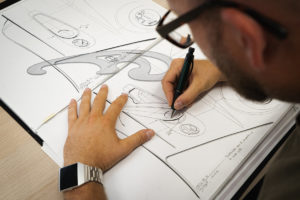
Ideation is the processes of both expanding and refining an idea, but doesn’t end in selection of a direction. This is a crucial point in the creative process to develop a product. Skipping and skimping this part results in poorly thought out products. Not only are they not the best fit for users, it doesn’t work for you, the person producing it. Ideation is the process of taking a single idea and expanding upon it through a process of exploration and concept generation.
When Concepting Happens
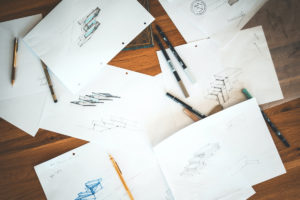
For design firms, this usually means taking a client’s idea or problem and generating a series of concepts. These are just ideas that have been put to paper, typically sketches, but sometimes CAD or physical models. The point of concepts and ideation isn’t to get stuck in the details. A lot of high-level thinking and outlining happens. That said, detail notes and sketches created when needed to clarify or explain. Again, the whole point is to communicate a concept quickly and completely to anyone who looks at it. It can even be words if you happen to be an amazing word smith. Visual however, is always best.
This phase of the design process generates the largest amount of ideas. Once we have the ideas, we then cut down in review. This cycle is repeated as long as needed, or the budget will allow. Often with startups and smaller projects we do 2-3 rounds to keep budgets low. However, with luxury products or complicated problems, you could go 20 rounds of concepts, models, and sketches before we make a final selection.
I’d like to make this process as easy as possible for everyone, it makes projects go smoother. So, here are 5 things to keep in mind while successfully going through the concepting phase with your product developer.
1. Have your documents together
Get an NDA, then send everything you have to your designer so they have a clear picture of your idea.
Ian Peterman, CEO Tweet
You should being everything you can to your designer as soon as an NDA is in place. Any sketches, descriptions, images, reference images of similar products, and anything else that might help describe your idea. It may seem silly to have to put this here, but it’s important. Skipping this makes the process take longer because we can’t start without this information from you. You will also likely bring all this again for your kick-off meeting.

2. Give edits for every concepting round

Client feedback is key to a successful project.
Ian Peterman, CEO Tweet
Almost every ideation process includes several rounds of ideation, where concepts are narrowed down, before more are created. To help with this, make sure you’ve spent plenty of time reviewing the concepts. Also, the best form of communication is visual. Red-line and mark up the concepts that were presented to you. Take your time but try to send them to your designer before meeting. This gives them time to review and think about your thoughts before discussing the concepts. The result is better ideas from your designer because they have spent some time on it already.
3. Quantity vs Quality
In ideation, quantity is a great place to start, but you should always aim to end with quality.
Ian Peterman, CEO Tweet
At the start of the ideation process, quantity is usually preferred to quality. You should be a part of this. Put out your ideas, even if they don’t seem the best. Having a ton of ideas put out there, even if they aren’t all winners, is part of the process.
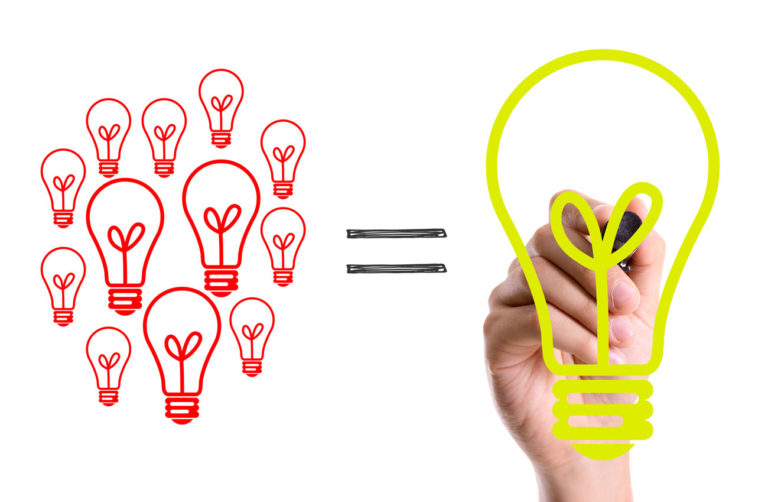
You want as many concepts as you can get, within reason and budget. However, you’ll see concept quality increase as the quantity decreases. This is because of a shift of focus, from maximum ideas to best ideas. So, don’t worry if you see what seems like lower quality concepts at first. This is a process that has worked for millions of products at this point.
4. Know your why

Without knowing your why, it's hard to guide any process, let alone coming up with valuable solutions.
Ian Peterman, CEO Tweet
While it’s commonly expected for a product developer or designer to be able to give reasoning behind their ideas. You should know your why too. Concepting is almost impossible to do effectively when you don’t know your why. Being able to communicate why you want to change something is a huge help to your designer.
Why you think a certain feature should be changed, for example, will allow your developer to create a better solution. Your input will help guide them toward the product that will fit your needs best. Without a why, you could be missing out on a better solution that you were thinking of.
5. Clear communication = Clear Concepting
Clear communication doesn't mean being the best speaker or sketcher, it means explaining your ideas in a way people can understand, whatever that means for you.
Ian Peterman, CEO Tweet
I can’t stress this enough. It doesn’t mean having the best sketches, or CAD, or being able to write like a bestselling author. It means making sure your thoughts are communicated to the designer, and that you are understood. Sometimes things don’t click the first time for a developer. We are human, after all. Typically, we prefer information overload over to not enough.
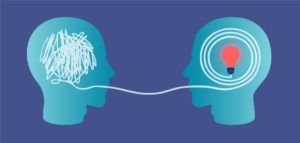
Explain your idea, your product, your why, all of it, and multiple ways doesn’t hurt. With that said, if you have to tell someone something too many times, you probably should find a different designer or developer. You should be working with an expert. It’s important that you are comfortable with the level of understanding your product developer has.
If they don’t understand fully, it causes avoidable mistakes and issues, which are the worst kind. It’s a two-way street and you need to communicate clearly just as much as your designer does. It’s also the job of a good developer to make sure they understand your idea. When both of those things happen, then everyone can walk away knowing that the idea is understood, and no time will be wasted going down the wrong path.
If you follow these 5 things, you’ll be making the most of the ideation/concepting process. This means a smoother project that in the end will make you happier. Having this process go smoothly will help set the tone for the rest of the project. We at the Peterman Firm are experts at walking both experienced and new clients through this process. It’s why we were able to build the Peterman Method™ to walk our clients through the entire product development process.
Your Next Steps
Related Conscious Design BLOG Posts
5 Tips to Creating Your Product Launch Plan
NASA isn’t the only place that should have a launch plan! After all of your time and money spent polishing your product the launch is a crucial step between your investment and your profits- NOT something you want to wing. It may feel like the end of a development process but it’s also the beginning of your next phase of business. At the Peterman Firm we support you through this stage, because creating a product launch plan can make or break a product in the market. We’ve seen many products flop because they didn’t have a plan at all. These are things you’ll need to be thinking of whether we help you or you launch on your own. Run the numbers When you have a final design that has been prototyped and you are looking to manufacture, you should be getting quotes from manufacturers for full production. Look at every cost you might have and give yourself an idea of what it is going to take to buy the first 100, 1,000, or even 10,000 units of your product. Knowing your numbers will help if you need to get financial help with the launching of your product. Have backup suppliers As any good developer or sourcing agent should tell you, you need backup suppliers. I’ve see production lines go down because a company didn’t get a backup supplier for a single bolt. Without the bolt, the product wasn’t made. Having primary, secondary, and even tertiary suppliers is important to make sure your products are made in time and you are able to deliver. We work with our clients to ensure multiple sources are provided for projects. Sourcing is a very important part of developing your product. Decide your launch platform This doesn’t just mean crowdfunding. Is your product going into large box stores, online marketplace, your own website, or some type of crowdfunding/launching platform? This can help decide what quantities you will be ordering in, and your marketing strategy. Are you going to use Amazon or another ecommerce site not run by you? If you are using a crowdfunding platform, there are definite differences and you need to research similar products and which is best for your industry and market. Set realistic goals It’s a good rule in general, but make sure that your goals are measurable and achievable. Especially while you are going through the process of launching an entire new product, keeping focus and having success happen is important. have a marketing strategy You need to know the who, where, and how of your marketing. There are lots of templates and website dedicated to discussing marketing. Who are you marketing to? It may be someone other than the user (such as baby toys). Where are you marketing? Online, radio, TV, billboards, etc. How are you marketing? Paying someone else, friends, or doing it all yourself? It doesn’t matter, just know what you are doing. BONUS: Keep your product launch plan flexible Don’t forget to create the actual plan! Just kidding, I’m sure you remember that. A quick note on plans, though. They never survive contact with the real world, so keep it flexible. Especially if you are a bootstrapping startup. Keep these things in mind as you create your product launch plan. This part of your project is something you want to start on as early as possible. As a last tip, make sure you have the right partnerships. They can bring you down or raise you up, and are largely outside of your direct control. As a full development firm instead of just a freelancer, we link our clients with the best possible partners for every stage of the process. Your Next Steps Struggling to create your own plan? Sign up for our free tutorial and learn about our course 4 Weeks to Launch + free tutorial Impressive Products Why Product Demos Must Go Beyond Impressions better product demos Related Conscious Design BLOG Posts Author Mr. Peterman View all posts
2 Tools you Should use with Your Developer
When working with a product developer, there are two types of programs you should be familiar with. While there are many options for each one, these two types of programs will help with communication between you and your developer. The first one is one you probably don’t have unless you work with people in 3D often, the other is common, but I’ve run into clients who didn’t use or were unfamiliar with them as well, mostly old school small businesses. 3D viewer You will need this for pretty much any physical product development anymore. While we might start out with sketches and PDFs, which you can make a 3D PDF too now, we quickly move into 3D now. Being able to view your developer’s 3D model from every angle, cross-sectioned, and hiding parts is essential to the review process. Many mid to high-end CAD packages have viewers that work with their software. It is also sometimes a good idea to ask your developer about simple CAD packages that are free/cheap that can open CAD files for you to review. We use SolidWorks primarily, and eDrawings is its free viewer. BLANK Ian Peterman, CEO Tweet File-Sharing Most people think of getting files from the developer, but it’s really a two-way street. You will want to send your initial documents to your developer, as well as feedback and other information in an easy way. Often these files are much larger than what an email can handle, so a file-sharing tool or service best meets these needs. There are many options here, far more than for the 3D viewers, so there is something for everyone. Setting up a shared “folder” with your developer where all files go to will keep things easy and straightforward for both of you and avoid losing any emails with files that you can’t find anymore. For this, we use Google Drive and Dropbox primarily. Talk with your developer, see what programs they use, and make sure everything is compatible. Good developers will set up file sharing through their preferred service, they pay for larger storage and more features than you would probably want to pay for. These tools, in addition to all the other programs and services we all use on an average day, will ensure you and your developer are able to communicate effectively. Your Next Steps Developing Smart Products What do you bring to a developer? Develop a Smart Product Modern Tools Tools of the Design World: Blender Blender Related Conscious Design BLOG Posts Author Mr. Peterman View all posts
Our Top 6 Client Communication Tips
Client communication is important to every businesses success. Whether it’s one on one, over mass email, or through social media, good communication helps your customers connect and stay with you.

